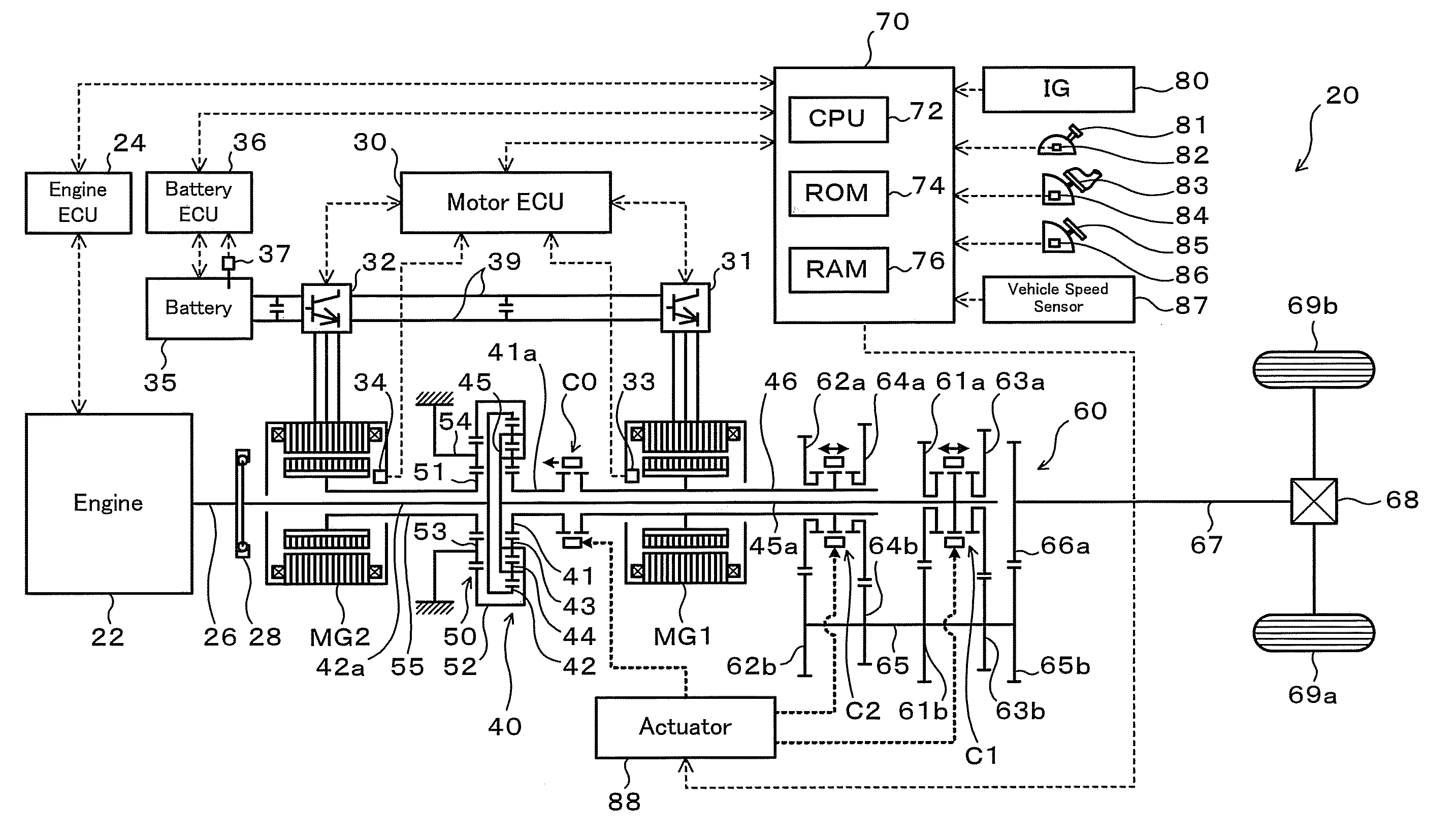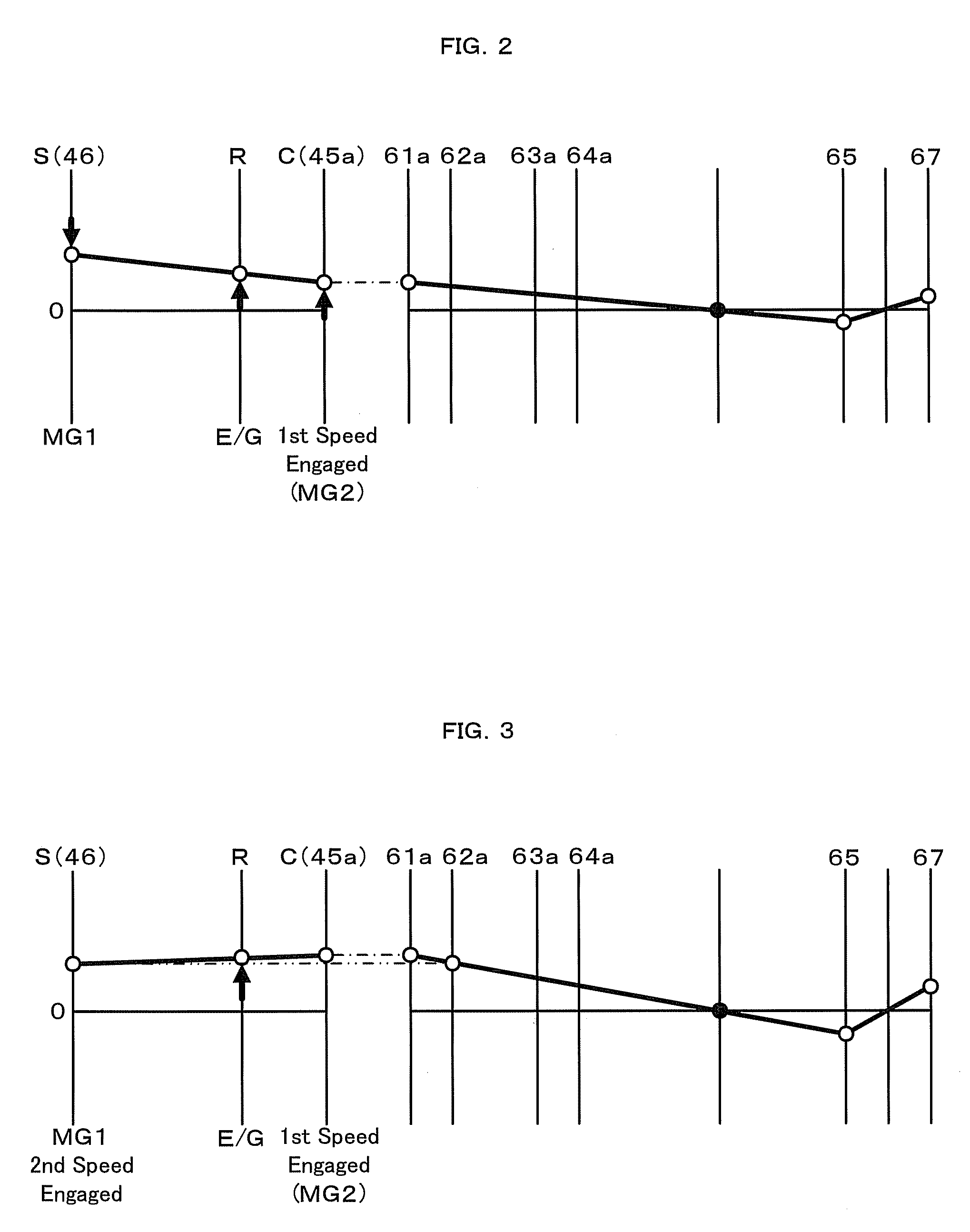Power output apparatus, vehicle equipped with power output apparatus, and control method of power output apparatus
a technology of power output apparatus and control method, which is applied in the direction of battery/fuel cell control arrangement, electric devices, gearing, etc., can solve the problems of difficult continuous output of relatively large torque, and achieve the effect of reducing respective motor efficiency, preventing excessive heat evolution, and large torqu
- Summary
- Abstract
- Description
- Claims
- Application Information
AI Technical Summary
Benefits of technology
Problems solved by technology
Method used
Image
Examples
Embodiment Construction
[0036]One mode of carrying out the invention is described below as a preferred embodiment.
[0037]FIG. 1 schematically illustrates the configuration of a hybrid vehicle 20 in one embodiment of the invention. The hybrid vehicle 20 shown in FIG. 1 is constructed as a rear-wheel drive vehicle and includes an engine 22 located in a front portion of the vehicle, a power distribution integration mechanism (differential rotation mechanism) 40 connected with a crankshaft 26 or an output of the engine 22, a motor MG1 connected with the power distribution integration mechanism 40 and designed to have power generation capability, a motor MG2 arranged coaxially with the motor MG1 to be connected with the power distribution integration mechanism 40 via a reduction gear mechanism 50 and designed to have power generation capability, a transmission 60 constructed to transmit the output power of the power distribution integration mechanism 40 with a speed change to a driveshaft 67, and a hybrid electr...
PUM
 Login to View More
Login to View More Abstract
Description
Claims
Application Information
 Login to View More
Login to View More - R&D
- Intellectual Property
- Life Sciences
- Materials
- Tech Scout
- Unparalleled Data Quality
- Higher Quality Content
- 60% Fewer Hallucinations
Browse by: Latest US Patents, China's latest patents, Technical Efficacy Thesaurus, Application Domain, Technology Topic, Popular Technical Reports.
© 2025 PatSnap. All rights reserved.Legal|Privacy policy|Modern Slavery Act Transparency Statement|Sitemap|About US| Contact US: help@patsnap.com



